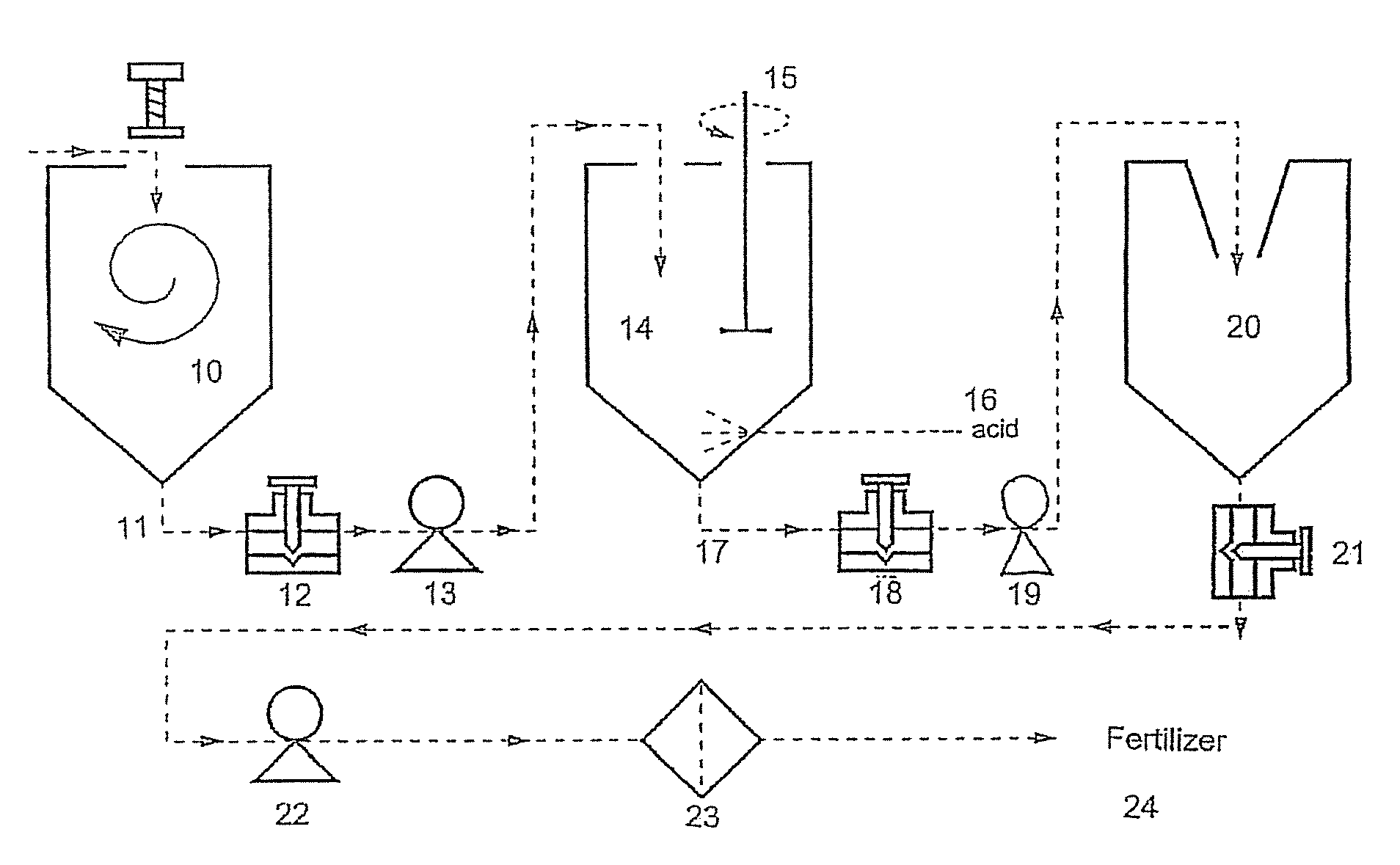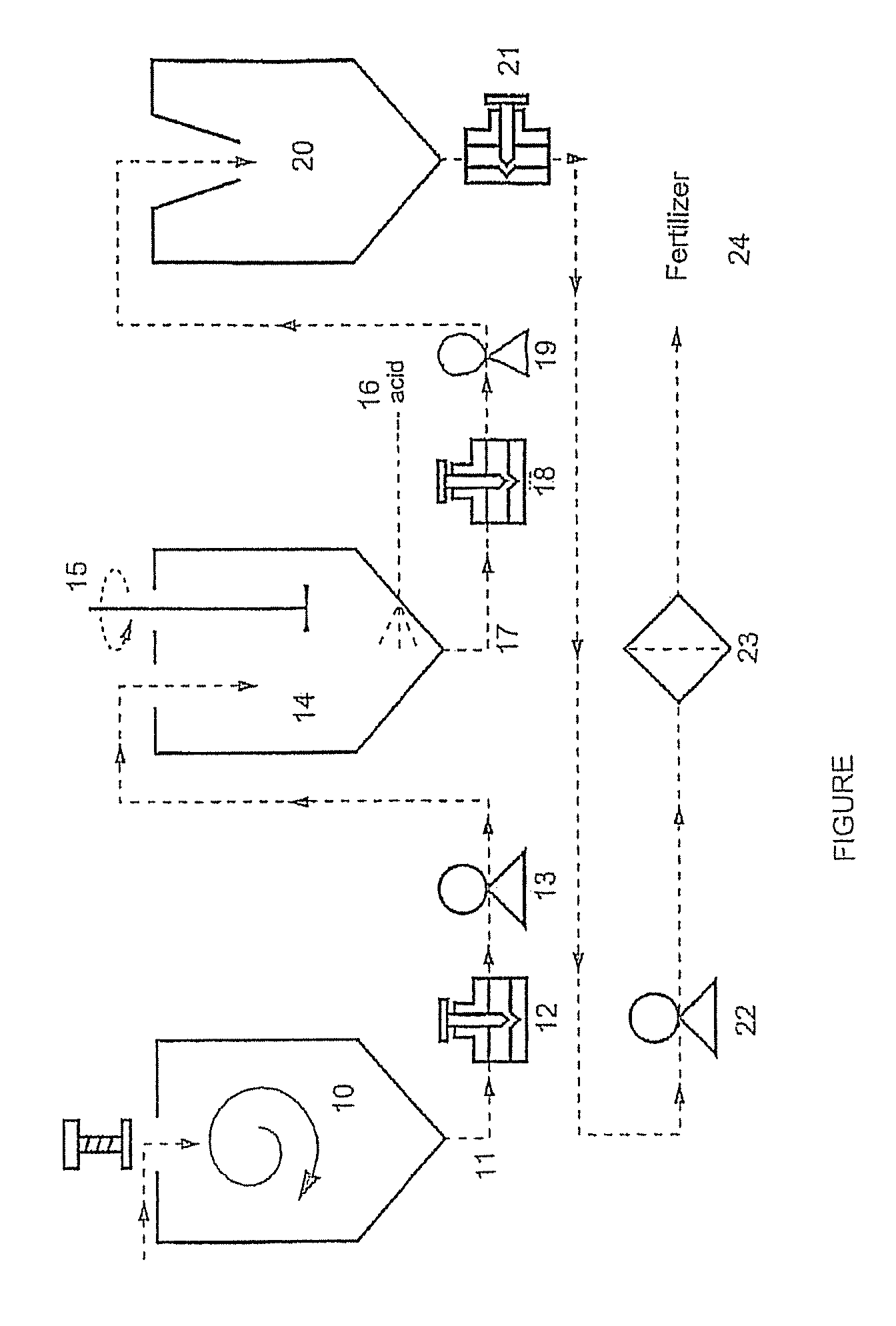Process of preparing soil additive of fertilizer from fish
a technology of fertilizer additive and fish, which is applied in the field of processing fish fertilizer for soil and plants, can solve the problems of chemical fertilizers that cannot treat plants but not soil, chemical fertilizers that may kill important soil organisms, and tend to be easily leached from the soil, etc., and achieves the effects of improving the phosphorus content of fertilizers, and reducing the risk of contamination
- Summary
- Abstract
- Description
- Claims
- Application Information
AI Technical Summary
Benefits of technology
Problems solved by technology
Method used
Image
Examples
example 2
[0048]Fish based fertilizer prepared according to Example 1 was subjected to a scientific trial and compared with a synthetic fertilizer and an untreated control as follows:
[0049]Three turf-grass species, “Crest” Kentucky bluegrass (Poa pratensis), “Cutter” perennial ryegrass (Lolium perenne) and “Penncross” creeping bentgrass (Agrostis palustris) were treated according to Table 2(a):
[0050]
TABLE 2(a)Total number of samplesNoReferenceFertilizerTurf-grass speciestreatmentfertilizerof Example 1“Crest” Kentucky888bluegrass(Poa pratensis)“Cutter” perennial888ryegrass (Lolium perenne)“Penncross” creeping888bentgrass (Agrostispalustris)
[0051]The reference fertilizer was prepared as a stock solution of 10.68 g KH2PO4, 39.92 g NH4H2PO4 and 17.32 g NH4NO3 in 1000 mL, of water, then diluted before use to obtain a nitrogen-phosphorus-potassium (“NPK”) ratio of 1-2.8-0.34, in order to be comparable to the embodiment of the present invention. The reference fertilizer was applied at a standard gre...
PUM
| Property | Measurement | Unit |
|---|---|---|
| pH | aaaaa | aaaaa |
| pH | aaaaa | aaaaa |
| pH | aaaaa | aaaaa |
Abstract
Description
Claims
Application Information
 Login to View More
Login to View More - R&D
- Intellectual Property
- Life Sciences
- Materials
- Tech Scout
- Unparalleled Data Quality
- Higher Quality Content
- 60% Fewer Hallucinations
Browse by: Latest US Patents, China's latest patents, Technical Efficacy Thesaurus, Application Domain, Technology Topic, Popular Technical Reports.
© 2025 PatSnap. All rights reserved.Legal|Privacy policy|Modern Slavery Act Transparency Statement|Sitemap|About US| Contact US: help@patsnap.com


